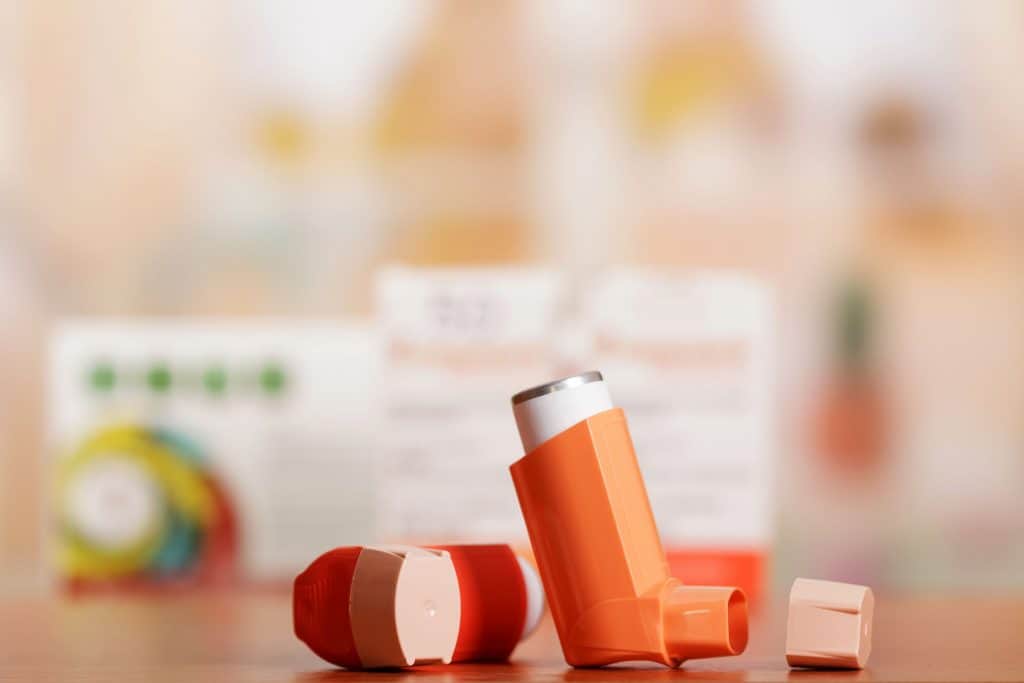Preventer Inhaler, What It Is, Use, Dosage, Side Effects, A Guide
Posted by Prescription Hope - See Editorial Guidelines (Last Updated On: Fri Apr 28 2023)
When it comes to asthma, there are a few types of inhalers used for treatment purposes. A preventer inhaler is one of those types. They serve a specific purpose. So, in case you’re wondering which inhalers do what, we’re going to discuss everything you need to know about preventer inhalers.
We’ll give a clear overview of what a preventer inhaler is, why they’re used, the difference with other inhalers, and more.
First off, let’s get a quick takeaway response for you, then we’ll dive into more details about preventer inhalers.
What is a preventer inhaler? A Preventer inhaler is a long-term medication used for the prevention and control of asthma and related symptoms. It works by relaxing the airways and preventing any triggers or inflammation from happening in the airway passage, making it easy to breathe. This medication is taken twice daily – needed or not.

Different colors of inhalers and the various terms used for inhalers always confuse many of us. With terms like preventer inhaler, reliever inhaler, and controller inhaler, patients are often confused as to what to use and when even when doctors provide a clear guide on using them.
And since inhalers are one commonly prescribed asthma medication, asthma patients need to know the differences.
What Is A Preventer Inhaler?
We have to understand what asthma is before we get into what a preventer inhaler is since a preventer inhaler is used in treating asthma conditions.

What happens during an asthma attack is that the airways narrow down to a much smaller diameter, causing difficulty in breathing.
The airways narrow and swell when it’s triggered by an allergen or other irritants, causing inflammation. Mucus production in the airways also increases, which will then tend to thicken over time, making it even harder to breathe.
So, what ideally needs to be done for treating asthma is to broaden the airways, making room and space for air to flow freely.
What a preventer inhaler does is, as the name suggests, is prevents the asthmatic conditions from occurring in the first place. It makes the airways less sensitive to triggers and inflammation. It also helps to reduce the redness and swelling in the airways, alongside drying up the mucus that builds in the airway passage.
So, by preventing these from happening, the airways are widened, providing enough space for air to move freely. Therefore, it makes it much easier for asthma patients to breathe.
Preventing these symptoms through a preventer inhaler will break the asthma cycle, which is the swelling of the airways, mucus production, and leaky air walls that cause inflammation.
So, in short, what a preventer inhaler does is aim to protect the airways from triggers, thereby keeping asthma conditions under control.
Dosage Of Preventer Inhalers
Preventer inhalers are long-term medications and are used as a part of long-term asthma management programs and plans.
Preventer inhalers are usually taken twice each day, once in the morning and once in the evening. It’s imperative to remember that because this is a prevention medication, the inhaler has to be used even if the recipient is not feeling asthma symptoms.
However, the time taken for this medication to work is unpredictable. On average, this medication will only really start to become effective after one or two weeks and sometimes may even take months, depending on the asthma conditions.
It’s dangerous to skip this medication even when you feel okay, and it could worsen asthma conditions if skipped. You shouldn’t use this medication during asthma attacks or severe conditions requiring immediate relief.
The most common type of preventer inhaler is what we call orange, or brown inhalers.

Who Needs And Is Prescribed A Preventer Inhaler?
In general, most people need to have a preventer inhaler to manage asthma. Apart from this, people who use a reliever inhaler more than two times a day should start using a preventer inhaler. Using a rescue inhaler more than twice a day means that the patient’s asthma is not well managed.

But before using a preventer inhaler, it’s important to assess one’s asthma condition and have necessary discussions with the doctor regarding whether one needs a preventer inhaler or not.
Doctors prescribe preventer inhalers for adults and adolescents with asthma when they:
- Experience asthma or related symptoms twice or more in a single month.
- Have problems with sleep due to asthma symptoms, or if they easily wake up at night more than once in a single month.
- Have had sudden asthma attacks and have made an urgent visit to the emergency department within the past 12 months.
Preventer inhalers are prescribed for children by assessing how often or how severe the asthma conditions are. Usually, doctors will look for:
- Symptoms that affect a child’s sleeping pattern or playtime at least once a week
- Any other frequent asthma attacks that required an urgent visit to the emergency department
- Any asthma symptoms that required hospitalization or ICU
Side Effects of Preventer Inhaler
Most of the preventer inhalers are steroids. The steroid that inhalers produce is a mimic of what our body or system produces naturally. Many of the healthcare professionals agree that these inhalers are safe and effective for the long-term use and management of asthma and related conditions and symptoms.
However, like all types of medications, these inhalers do have some side effects. But these side effects tend to be reduced when this medication is taken in moderate doses.
Some common side effects of the preventer inhaler include
- Husky/hoarse voice
- Fungal growth in the mouth (thrush)
- Sore throat
These common and minor side effects can be minimized to a greater extent by using a “spacer” or by rinsing or gargling some water after using the inhaler.
While those are some common side effects, the following are some infrequent yet severe side effects of using preventer inhalers.
These side effects mainly occur when a tiny amount of drugs are absorbed into the bloodstream. The liver will naturally clear most of these, but when very high doses are taken, the drug absorption can lead to:
- Thinning of the bones called osteoporosis
- Thinning of the skin, which causes easy bruising
- The body’s ability to react or respond to severe health conditions may reduce overtime
When children use preventer inhalers, especially in high doses, they’re most likely to experience minor growth suppression.
Sadly, some healthcare professionals say that poorly treated asthma conditions are far better than the worsening of these side effects caused by steroid inhalation.
While this can be avoided through appropriate measures, those who are extra concerned about these side effects are recommended to seek advice from healthcare professionals regarding potential alternatives.
Some non-steroidal preventer medicines can be used for treating asthma, especially for children. These alternatives are free from most of the above-discussed side effects, only with a little bit of throat irritation on occasion.

Finally
We hope this has been a useful exercise in understanding what a preventer inhaler is and their function, among other inhaler types. As well as the potential side effects.
Are you an asthma sufferer and struggling to obtain your medication? Then here’s what you can do.
Here at Prescription Hope, we utilize patient assistance programs to help individuals obtain their prescription medications at a set, affordable cost. Click here to enroll in Prescription Hope’s medication access service and let us save you money on your prescription bills!
ENROLL



